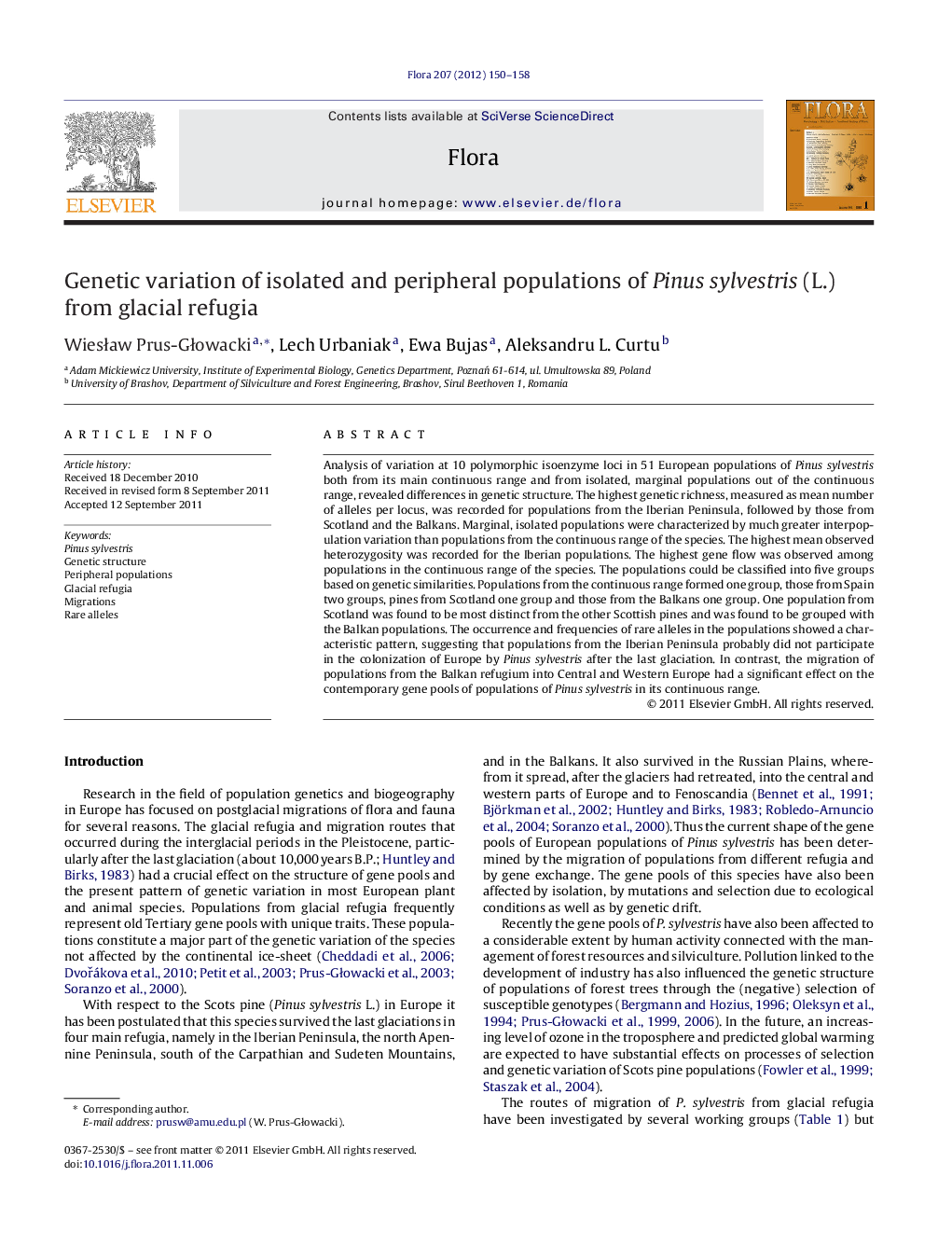| Article ID | Journal | Published Year | Pages | File Type |
|---|---|---|---|---|
| 2179895 | Flora - Morphology, Distribution, Functional Ecology of Plants | 2012 | 9 Pages |
Analysis of variation at 10 polymorphic isoenzyme loci in 51 European populations of Pinus sylvestris both from its main continuous range and from isolated, marginal populations out of the continuous range, revealed differences in genetic structure. The highest genetic richness, measured as mean number of alleles per locus, was recorded for populations from the Iberian Peninsula, followed by those from Scotland and the Balkans. Marginal, isolated populations were characterized by much greater interpopulation variation than populations from the continuous range of the species. The highest mean observed heterozygosity was recorded for the Iberian populations. The highest gene flow was observed among populations in the continuous range of the species. The populations could be classified into five groups based on genetic similarities. Populations from the continuous range formed one group, those from Spain two groups, pines from Scotland one group and those from the Balkans one group. One population from Scotland was found to be most distinct from the other Scottish pines and was found to be grouped with the Balkan populations. The occurrence and frequencies of rare alleles in the populations showed a characteristic pattern, suggesting that populations from the Iberian Peninsula probably did not participate in the colonization of Europe by Pinus sylvestris after the last glaciation. In contrast, the migration of populations from the Balkan refugium into Central and Western Europe had a significant effect on the contemporary gene pools of populations of Pinus sylvestris in its continuous range.
